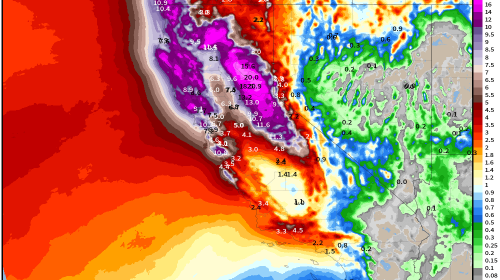SLV Voters Face a Water District Rate Initiative this Fall
By Jayme Ackemann
The voters of San Lorenzo Valley face a crucial decision in the November election: do they want a reliable water system that delivers fresh, safe water every time they turn on their taps, or do they risk ending up with inconsistent and unreliable service like their neighbors in Big Basin?
A small group of residents is opposing the new water rates set by the board earlier this year. Here are some key points to consider:
Signatures and Voter Impact
1,023 Signatures: The number of signatures required to place this issue on the November ballot, a small fraction of the more than 17,000 voting-age residents in SLV. This suggests that many residents might not be aware of the potential consequences of repealing the rates. Do you want a tiny fraction of SLV residents deciding on the quality of your water system?
Financial Implications
$7.7 Million Loss: If the ballot initiative passes and rates revert to previous levels, the Water District could lose at least $7.7 million in revenue needed to pay its ongoing costs over the next few years. This would be unsustainable and could severely impact the quality and reliability of water services.
Reasons for High Water Rates
Geography: SLV covers a large area, much bigger than neighboring districts like Scotts Valley. This means more miles of pipes and more tanks to maintain, resulting in higher costs. The hilly terrain also increases costs due to the electricity required to pump water uphill. Flat areas like Santa Cruz have lower energy costs for water delivery.
Water Sources: SLV benefits from local streams and groundwater. However, treating surface water, as SLV must, to ensure it’s safe for drinking is more expensive due to the need for chemicals, treatment facilities, and extensive testing. Surface water is more likely to carry bacteria and other contaminants that must be removed before drinking.
Unfunded Mandates: State and federal laws require SLV to participate in habitat preservation and aquifer maintenance without providing operating funds to cover these costs, adding to the district’s financial burden. SLV is required by state regulation to help fund the Santa Margarita Groundwater Agency’s operating costs but receives no state-funding to support this effort.
Natural Disasters: SLV has been repeatedly affected by natural disasters, increasing operational costs. Emergency responses to events like fires and heavy rains require overtime pay and additional resources. The County is currently seeking an increase in property taxes to support emergency response in unincorporated communities because the county’s costs are unsustainable. SLV is dealing with those same challenges and if voters repeal this rate increase will be doing so without the ability to set a budget that will pay for those emergency response costs.
Long-Term Infrastructure Investment: Maintaining a large system with extensive infrastructure requires ongoing upgrades. Debt financing spreads these costs over time, much like a mortgage for a home. This ensures that the system can serve future generations who will participate in the obligation to pay for those investments rather than placing the entire burden on today’s residents. Government agencies must balance their budgets annually and cannot operate for profit like private businesses. They also can’t adjust pricing dynamically to meet costs. Instead, they set rates to cover actual operating expenses and create reserves for future projects.
Potential Consequences of Repealing Rates
If the initiative to repeal water rates passes in November, here are the likely consequences:
Slower Emergency Response: Reduced funds would mean slower responses to water main breaks and outages, especially during storms or natural disasters. The District could maintain regular operations but would have little funding for overtime and emergency response.
Increased Outages: With less money for maintenance and repairs, water outages would become more frequent and last longer. Particularly during emergencies like last winter’s storms.
Higher Project Costs: Delaying infrastructure projects due to funding issues will increase costs over time due to inflation. A kitchen remodel in 2000 cost thousands less than it does today. Delayed maintenance costs more.
Reliable water service is crucial for maintaining property values in SLV. Voting in November to repeal the current rates could lead to service deterioration, affecting both the quality of life and property values. For the continued reliability and safety of the water supply, it is important to vote no on the SLV Water District initiative this fall.
More information
Voter information for Measure U at votescount.com
Argument for Measure U
Argument Against Measure U
Impartial Analysis of Measure U
Measure U Resolution
###
Have a story or opinion to contribute? The San Lorenzo Valley Post welcomes your Santa Cruz Mountains news, story ideas, photos, and letters. Send us an email.
Sign up for our newsletter to stay connected to news and events in the Santa Cruz Mountains.
Jayme Ackemann
Jayme Ackemann is a former SLV Water District Director and nearly 20 year resident of Ben Lomond. She resigned the board in June when she moved to an unincorporated community in the Sacramento Valley. Jayme has advocated for smart local government throughout her 25 years serving in both her staff and elected capacities. She is currently Vice President of Public Affairs for California’s first Community Choice Agency, MCE.





